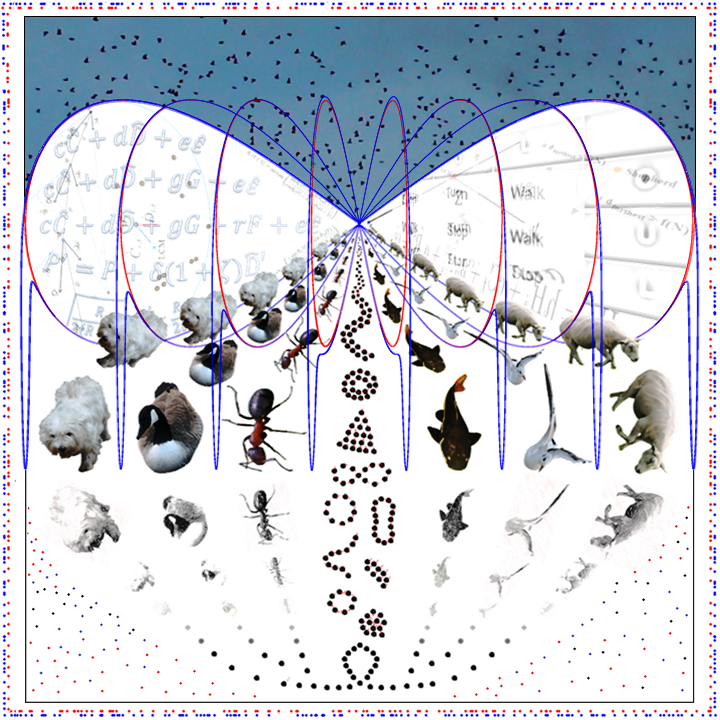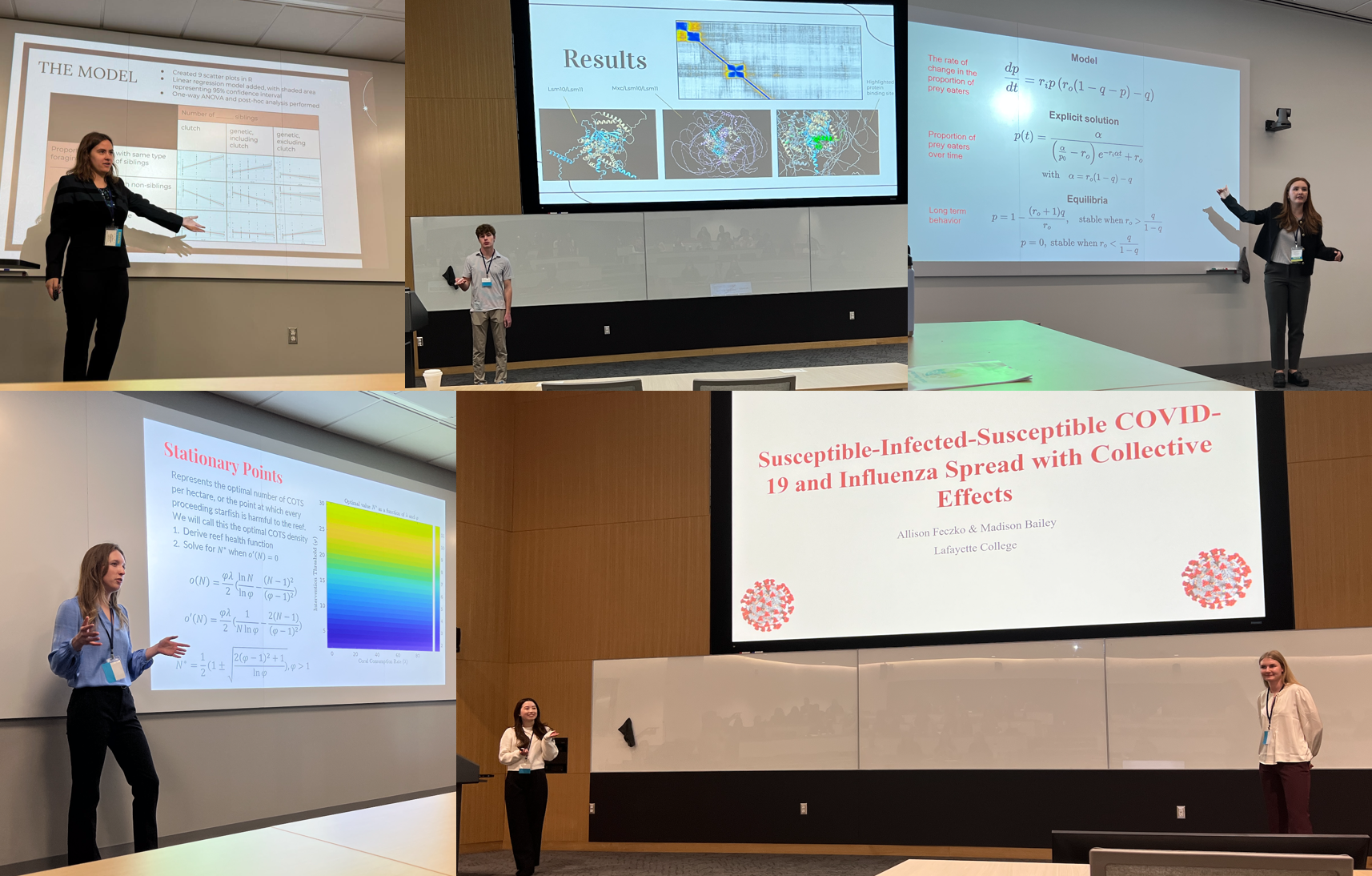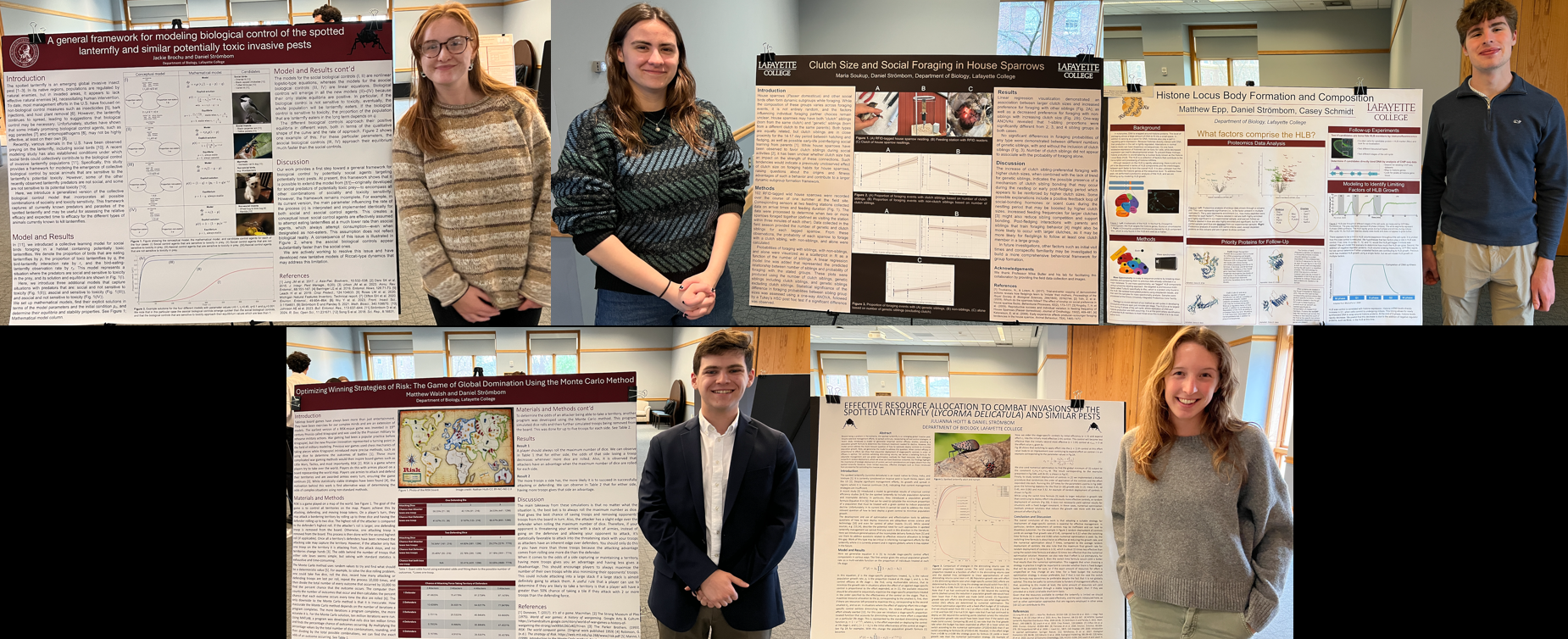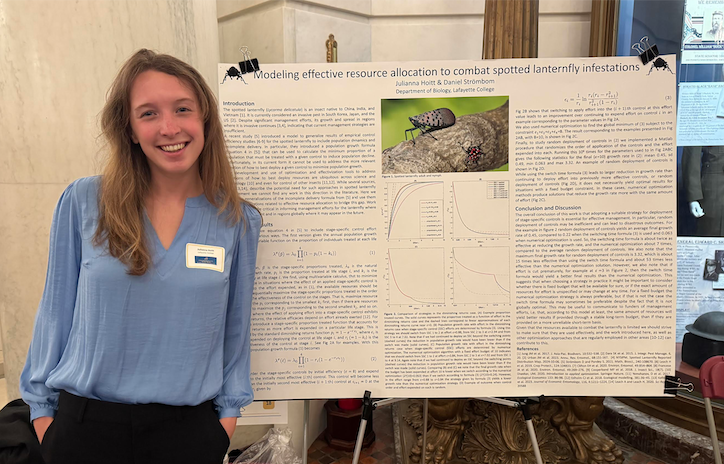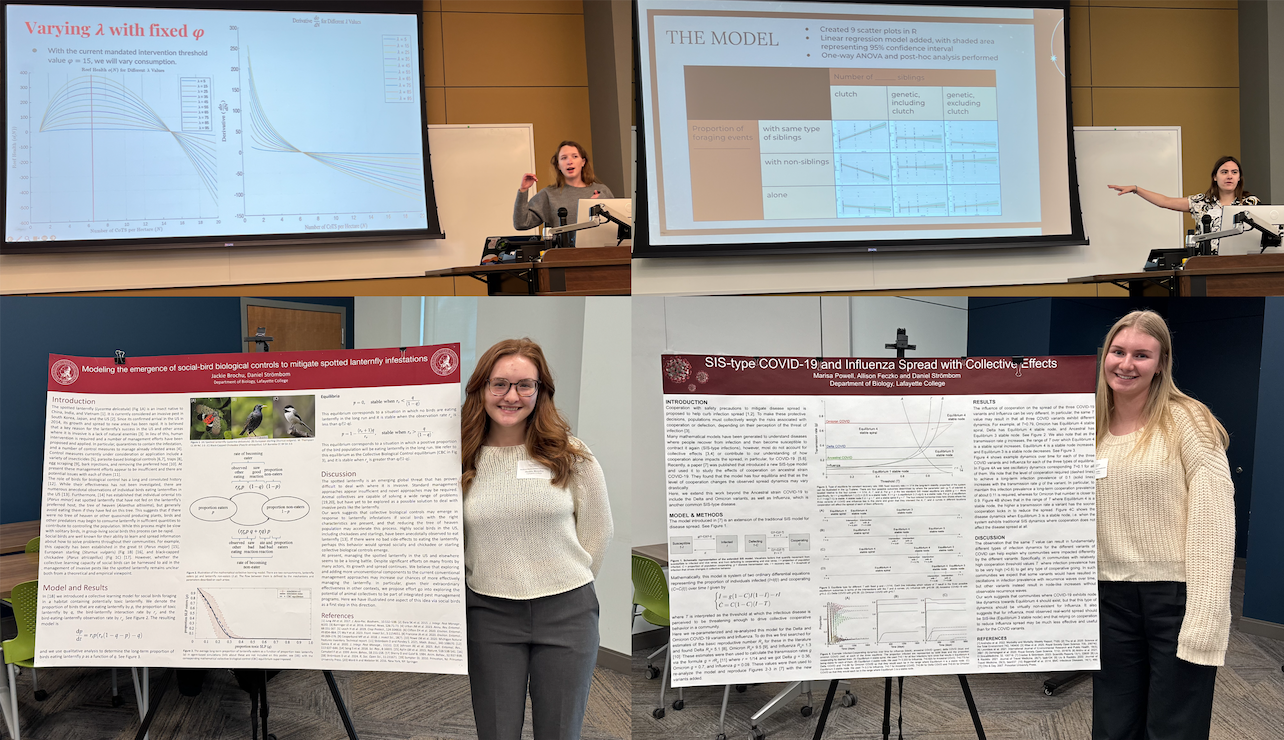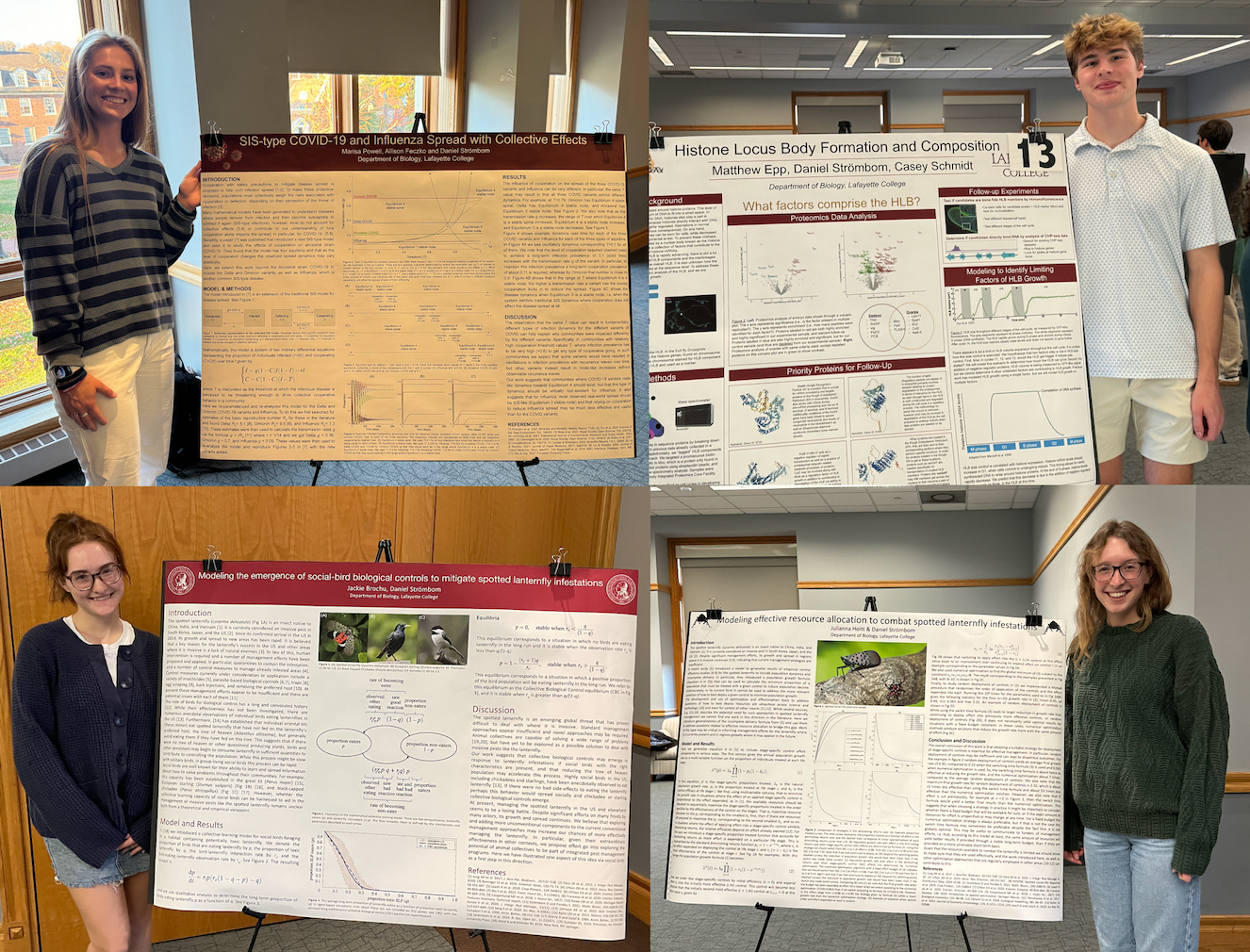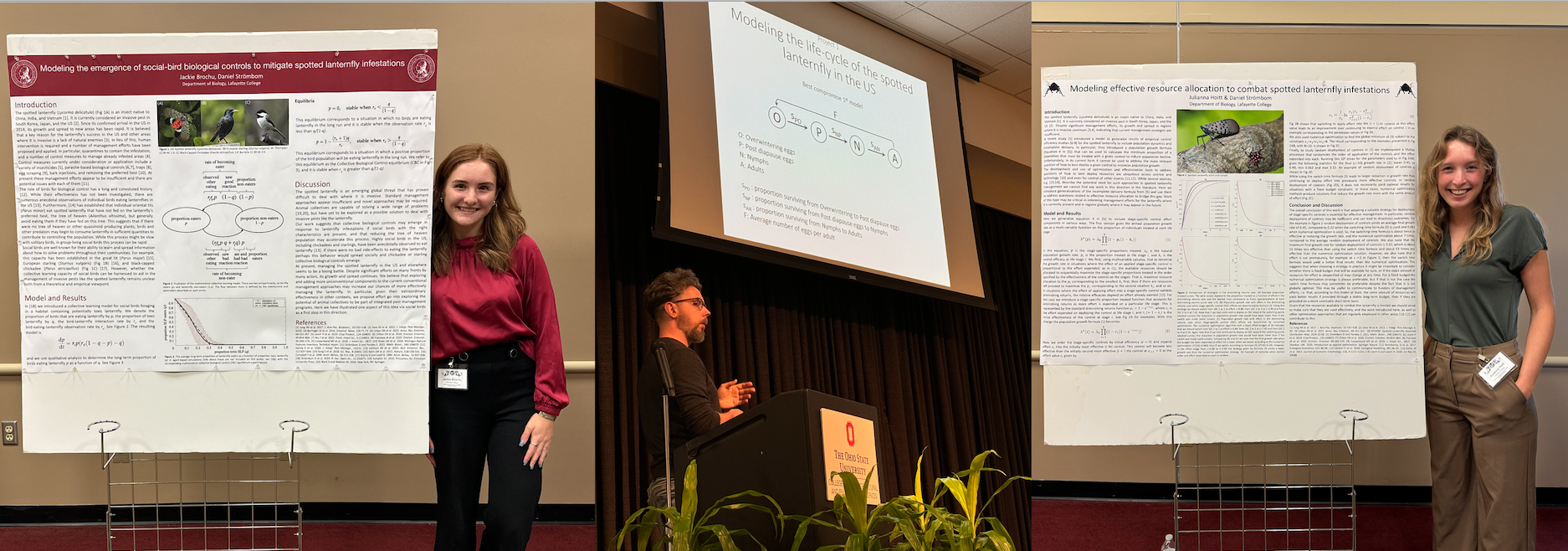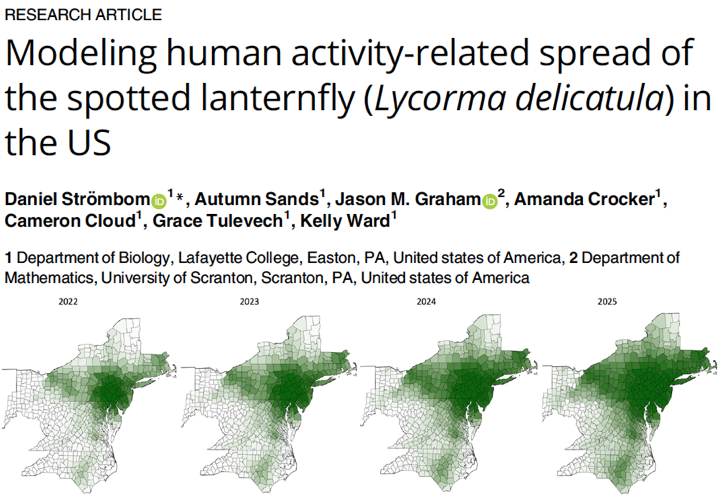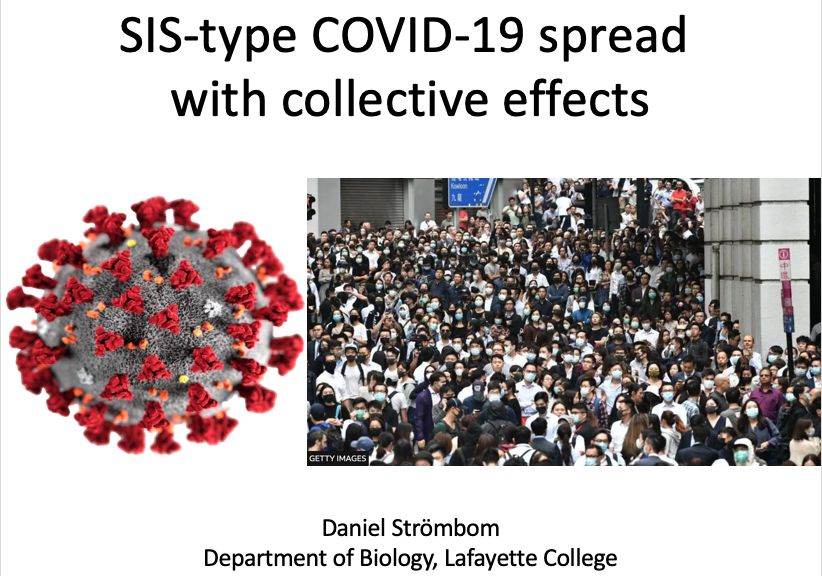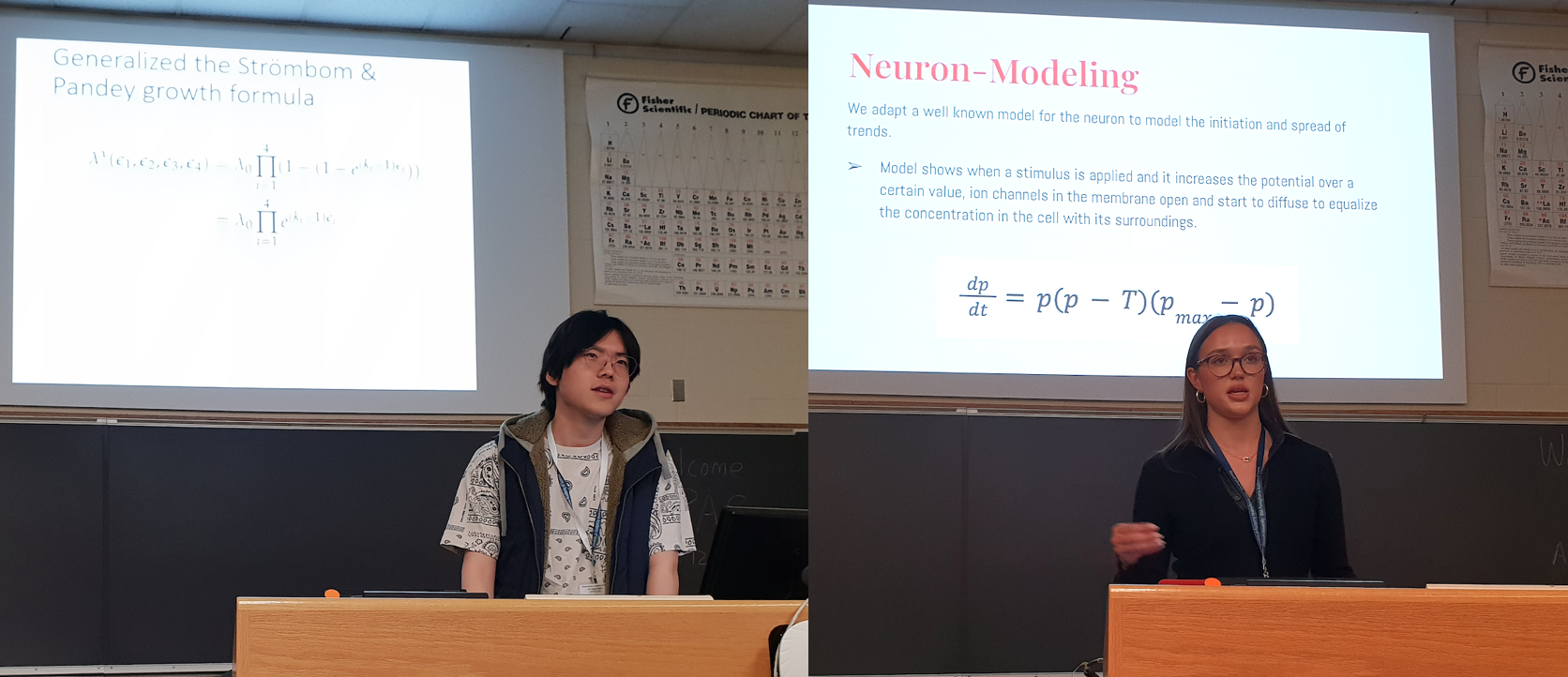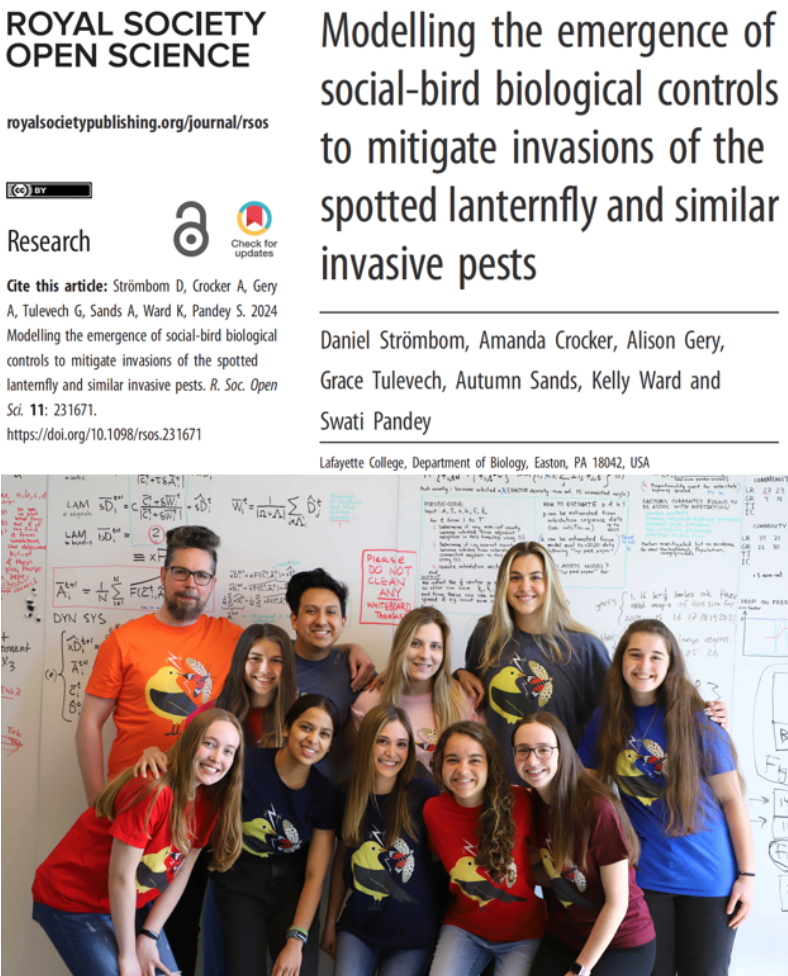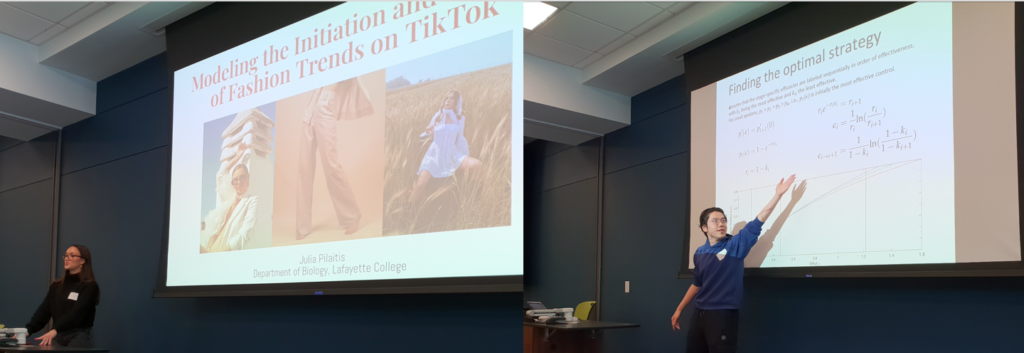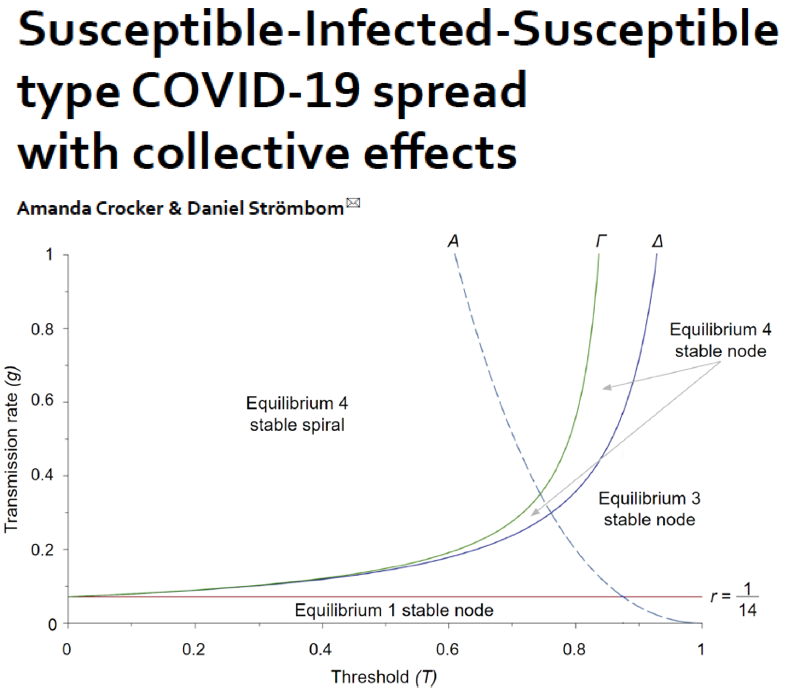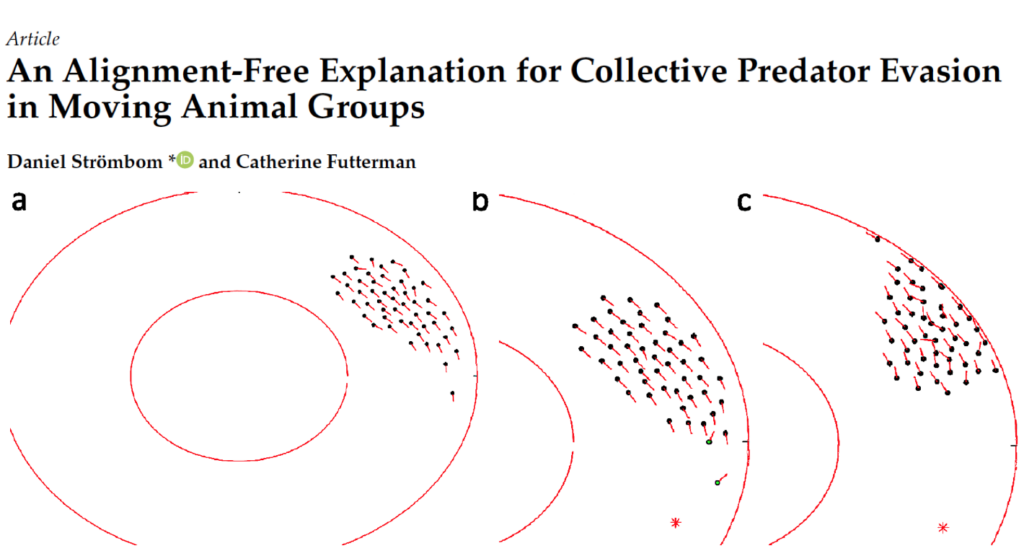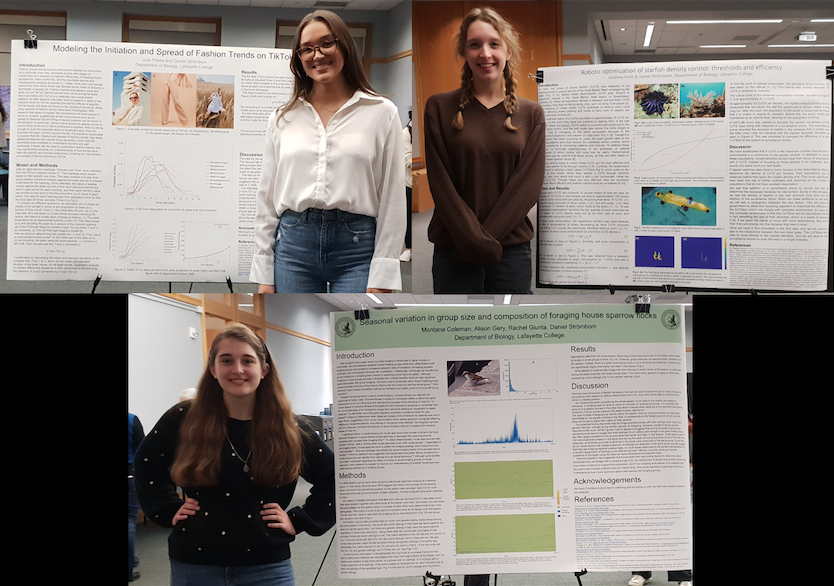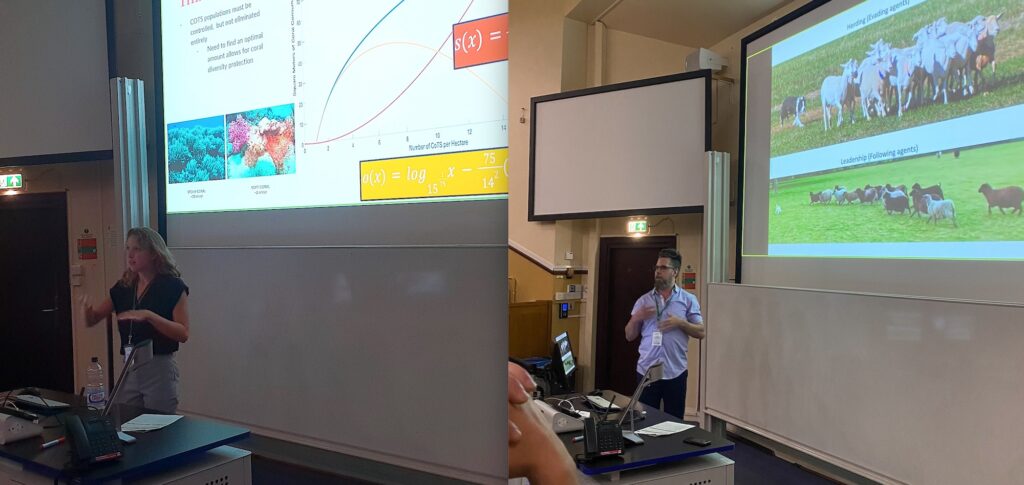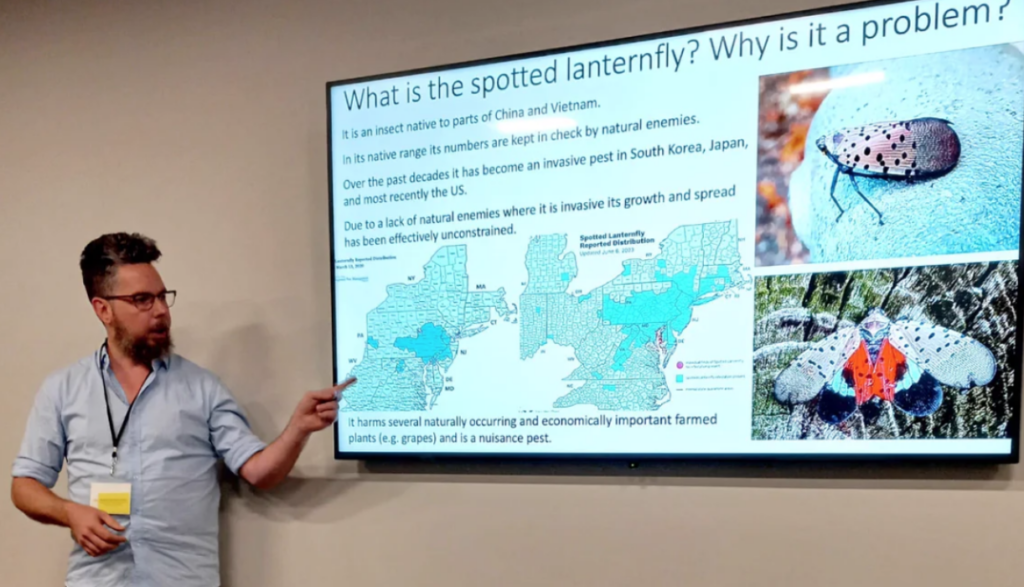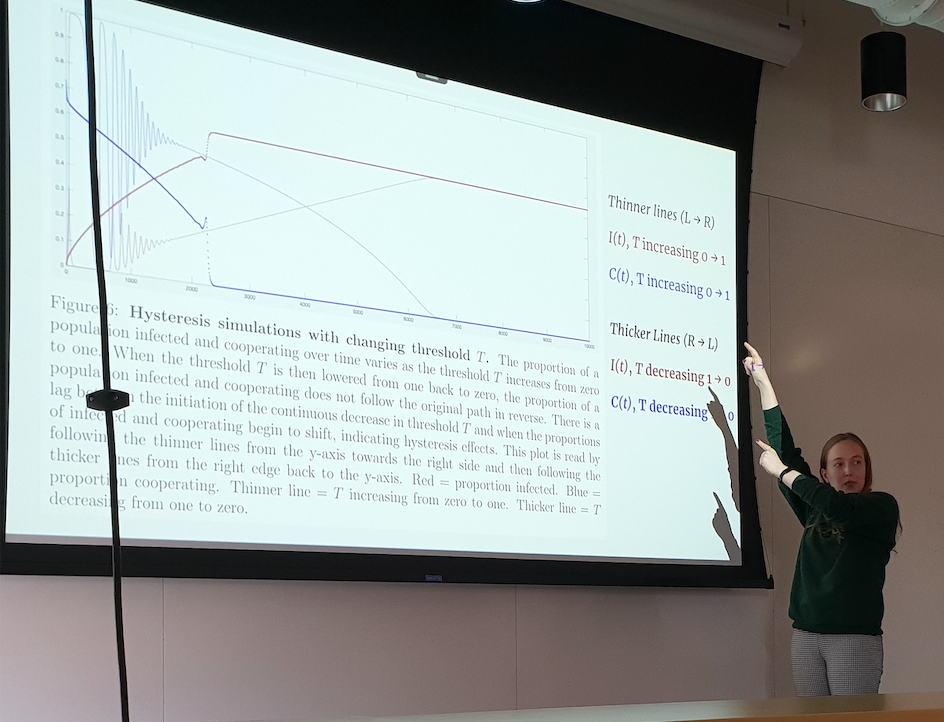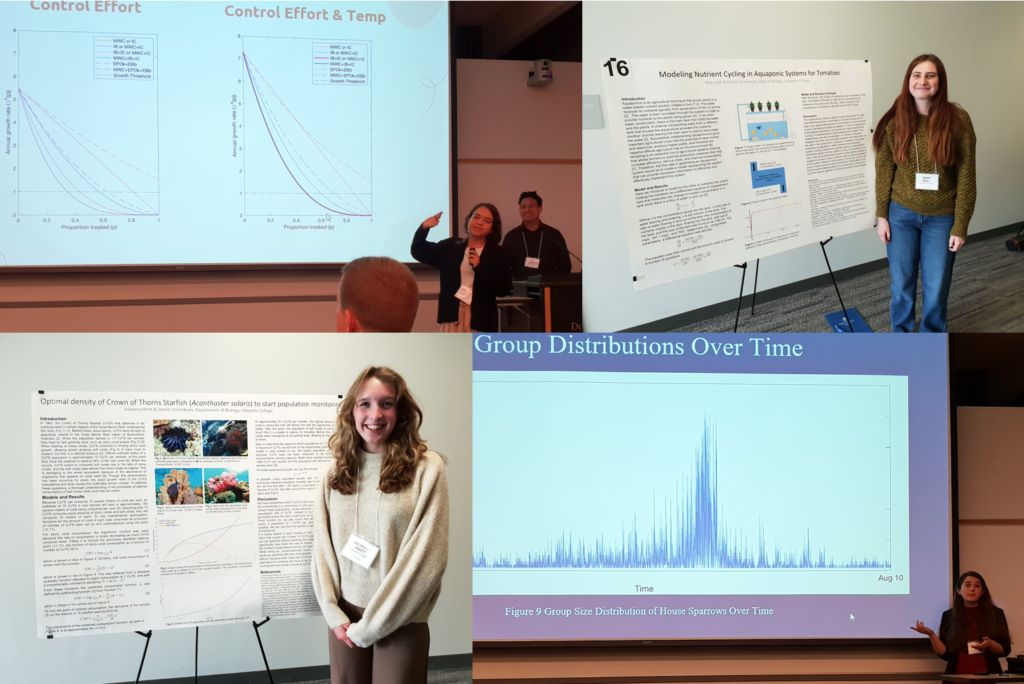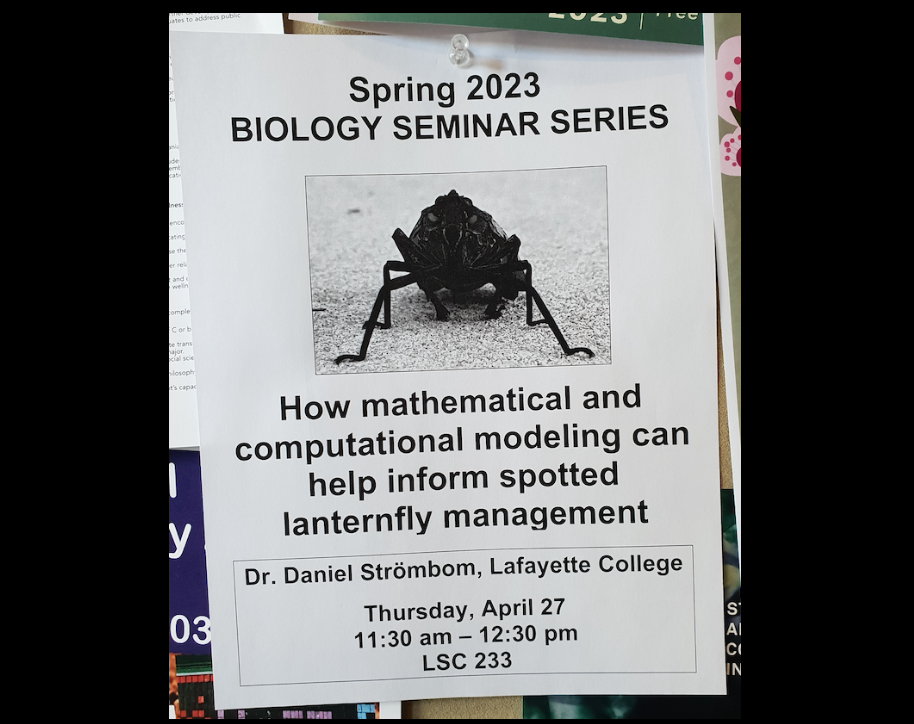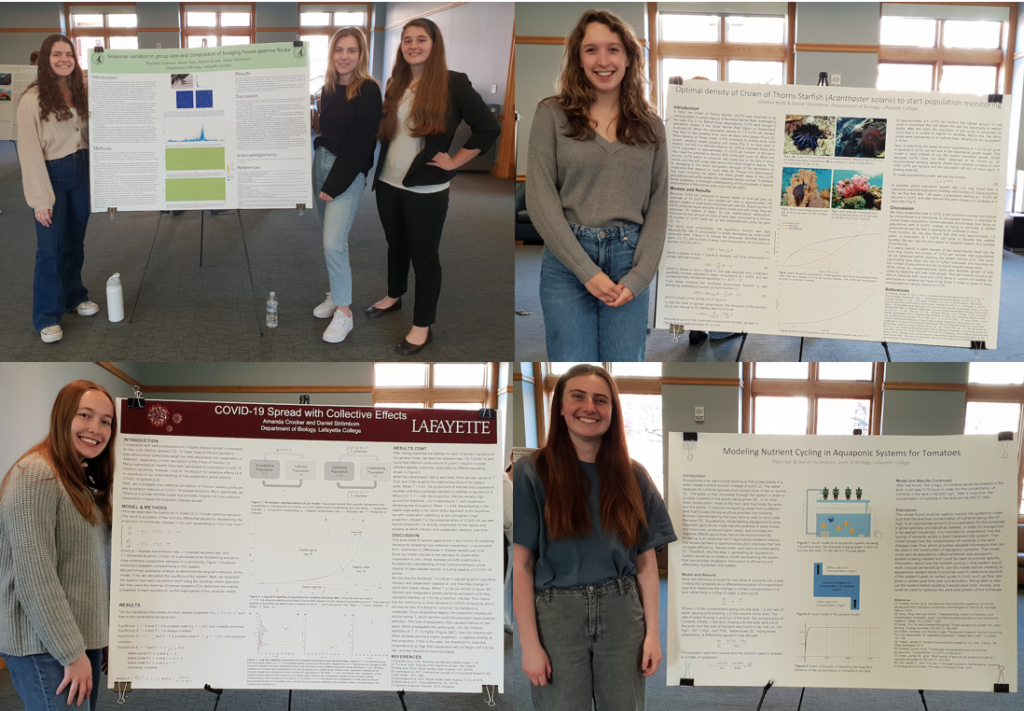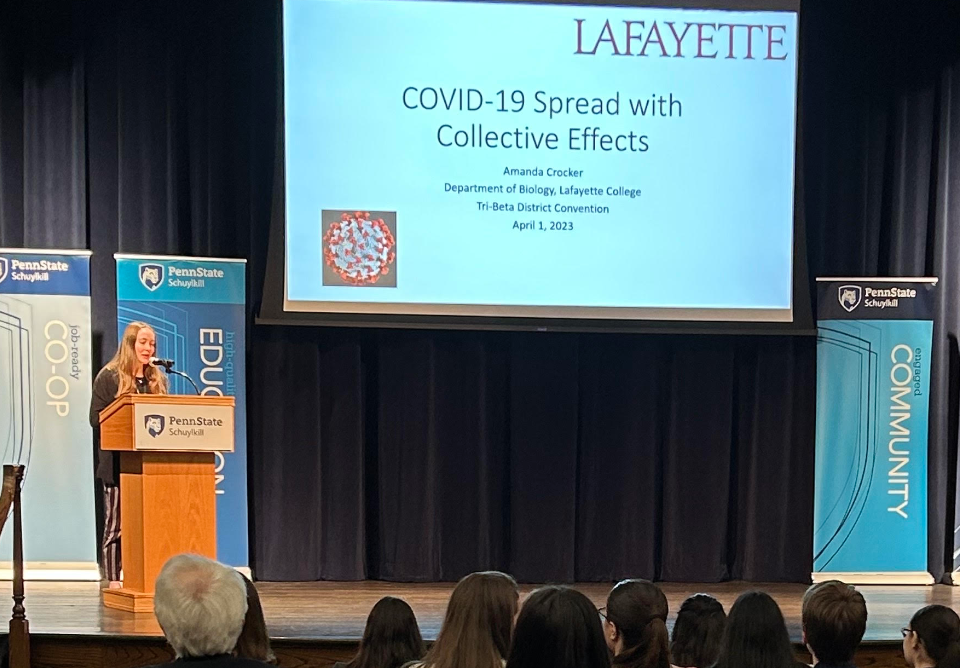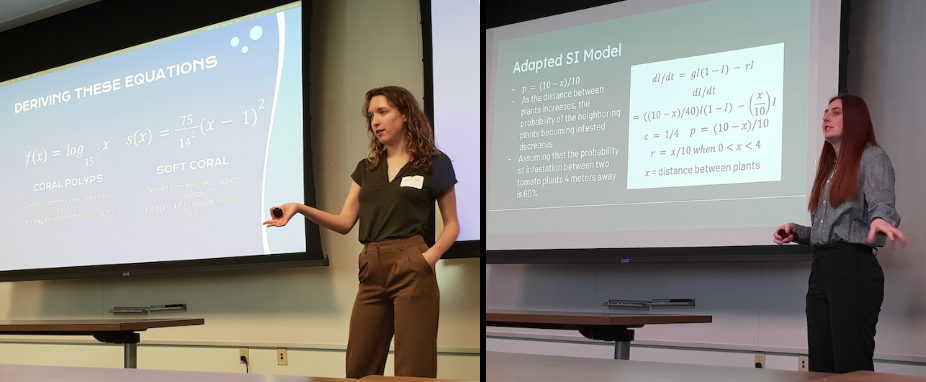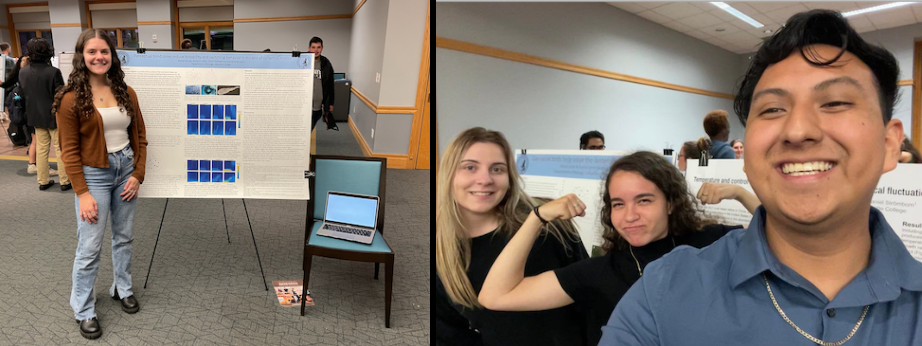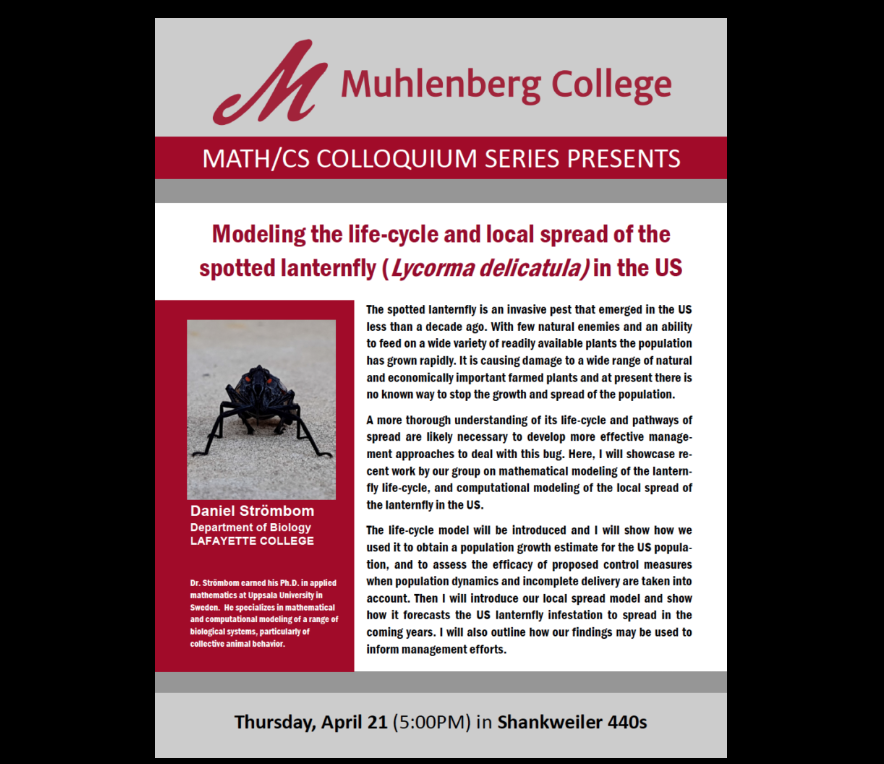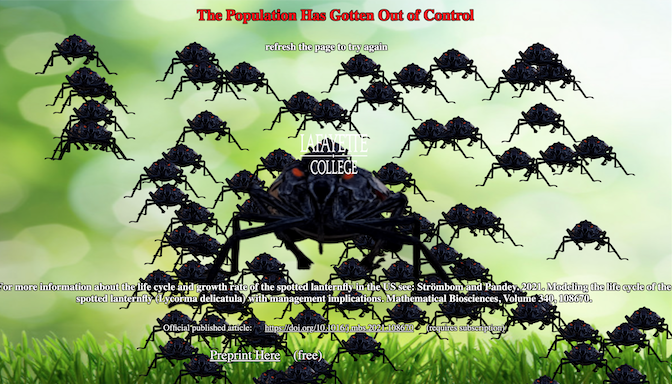We work to understand how animals in moving groups coordinate themselves to produce the group level structure and dynamics we observe in real world flocks, schools, swarms and herds. The standard explanation for how this works is that the individuals in these groups interact repeatedly with nearby individuals via some combination of attraction, repulsion and alignment. Alignment means that each individual animal adopts the average heading of nearby individuals, and the ability of individuals in real flocks to adopt a common heading is often attributed to this interaction. However, over the past decade both empirical and theoretical insights have led some to question this assumption, and our collective motion research is largely focused on alignment-free models. In particular, we work determine the capabilities of attraction (and sometimes repulsion) alone to generate the types of collective motion that was previously thought to require the alignment interaction, especially in generating groups where all individuals are moving in the same direction (aka polarized groups), and groups that frequently switch between different structures and dynamics.
OUR WORK
Recent Journal articles
D Strömbom and C Futterman. 2023. An alignment-free explanation of collective predator evasion in moving animal groups. Dynamics 3(4):793-802. Paper: https://www.mdpi.com/2673-8716/3/4/43 Code: https://github.com/danielstrombom/Evasion
D Strömbom, G Tulevech, Z Cullen, R Giunta. 2022. Asymmetric interactions induce bistability and switching behavior in models of collective motion. Dynamics 2(4):462-472. Paper: https://www.mdpi.com/2673-8716/2/4/27 Code: https://github.com/danielstrombom/Asymmetric
D Strömbom, S Nickerson, C Futterman, A DiFazio, C Costello, K Tunstrom. 2022. Bistability and switching behavior in moving animal groups. Northeast Journal of Complex Systems 4(1). Paper: https://orb.binghamton.edu/cgi/viewcontent.cgi?article=1034 Code: https://github.com/danielstrombom/bistability
D Strömbom and G Tulevech. 2022. Attraction versus alignment as drivers of collective motion. Frontiers in Applied Mathematics and Statistics, 7:717523. Paper: https://www.frontiersin.org/articles/10.3389/fams.2021.717523/full Code: https://github.com/danielstrombom/AttractionVsAlignment
D Strömbom and A Antia. 2021. Anticipation induces polarized collective motion in attraction based models. Northeast Journal of Complex Systems 3(1). Paper: https://orb.binghamton.edu/cgi/viewcontent.cgi?article=1027&context=nejcs Code: https://github.com/danielstrombom/Anticipation
D Strömbom, T Hassan, WH Greis & A Antia. 2019. Asynchrony induces polarized collective motion in attraction based models. Royal Society Open Science 6:190381. Paper: https://royalsocietypublishing.org/doi/full/10.1098/rsos.190381 Code: https://github.com/danielstrombom/Asynchrony
Key background articles
D Strömbom. 2011. Collective motion from local attraction. Journal of Theoretical Biology. Official: https://www.sciencedirect.com/science/article/abs/pii/S002251931100261X Preprint: https://hal.science/hal-00719499/file/PEER_stage2_10.1016%252Fj.jtbi.2011.05.019.pdf
D Strömbom et al. 2015. The Shape and Dynamics of Local Attraction. European Physical Journal ST. https://link.springer.com/article/10.1140/epjst/e2015-50082-8
Presentations (Selected)
R Giunta. Perceptual blind zones induce bistability and switching behavior in models of collective motion. Poster. Lafayette’s Fall 2022 Student Research Poster Session.
G Tulevech. Collective motion from attraction and burst-and-glide dynamics. Talk. 97th Annual Pennsylvania Academy of Sciences meeting. 2022.
D Strömbom. Bistability and switching behavior in moving animal groups. Northeast Conference on Complex Systems 2022.
D Strömbom. Anticipation induces polarized collective motion in attraction based models. Northeast Conference on Complex Systems 2021.
S Nickerson. Modeling Self-Organization and Escape Waves in Moving Animal Groups. 92nd Annual Pennsylvania Academy of Sciences meeting. 2016.
L Seitz, L Filpo, A Bothwell. Exploring the Effects of Neighbor Selection and (A)Synchrony in Models of Collective Motion. 92nd Annual Pennsylvania Academy of Sciences meeting. 2016.
WH Greis, T Hassan. Exploring the Effects of asynchrony in models of collective motion. 91st Annual Pennsylvania Academy of Sciences meeting 2015.
Miscellaneous
Self-Propelled Particle model tutorial from Collective Phenomena in Animal Groups (BIOL357). The required Matlab Files.
LAF TODAY COVERAGE
Professor, student, and alums explain how moving animal groups change shape over time. https://news.lafayette.edu/2023/02/02/professor-student-and-alums-explain-how-moving-animal-groups-change-shape-over-time
Student-faculty research sheds light on collective motion in animals. https://news.lafayette.edu/2022/05/20/student-faculty-research-sheds-light-on-collective-motion-in-animals/
